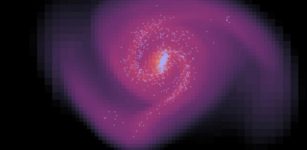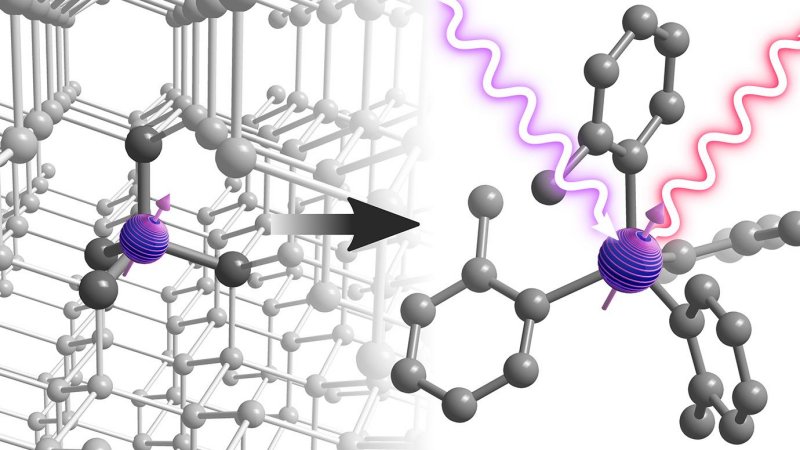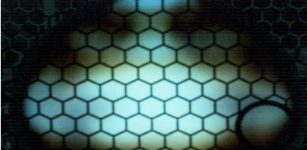New Step To Bring Quantum And All-Optical Signal Processing Closer To Reality
Eddie Gonzales Jr. – MessageToEagle.com – Researchers at Stevens Institute of Technology have coaxed photons into interacting with one another with unprecedented efficiency—a key advance toward realizing long-awaited quantum optics technologies for computing, communication, and remote sensing.
Photons must interact in order to process information. However, these tiny packets of light want nothing to do with each other, each passing by without altering the other.
 A stylized version of a racetrack nanosandblasted on lithium niobate, where photons are coaxed to interact with each other under low energy conditions. The new system could be optimized to work at the level of individual photons – the holy grail for room-temperature quantum computing and secure quantum communication. Credit: Stevens Institute of Technology
A stylized version of a racetrack nanosandblasted on lithium niobate, where photons are coaxed to interact with each other under low energy conditions. The new system could be optimized to work at the level of individual photons – the holy grail for room-temperature quantum computing and secure quantum communication. Credit: Stevens Institute of Technology
The new method works at very low energy levels, suggesting that it could be optimized to work at the level of individual photons—the holy grail for room-temperature quantum computing and secure quantum communication.
“We’re pushing the boundaries of physics and optical engineering in order to bring quantum and all-optical signal processing closer to reality,” said Yuping Huang, an associate professor of physics and director of the Center for Quantum Science and Engineering, who led the team, said in a press release.
To achieve this advance, Huang’s team fired a laser beam into a racetrack-shaped microcavity carved into a sliver of crystal. As the laser light bounces around the racetrack, its confined photons interact with one another, producing a harmonic resonance that causes some of the circulating light to change wavelength.
Before defining the racetrack structure, the team needed to apply high-voltage electrical pulses to create carefully calibrated areas of alternating polarity, or periodic poling, that tailor the way photons move around the racetrack, increasing their probability of interacting with each other.
Chen explained that to both etch the racetrack on the chip and tailor the way photons move around it, requires dozens of delicate nanofabrication steps, each requiring nanometer precision.
“To the best of our knowledge, we’re among the first groups to master all of these nanofabrication steps to build this system—that’s the reason we could get this result first.”
Moving forward, Huang and his team aim to boost the crystal racetrack’s ability to confine and recirculate light, known as its Q-factor.
The team has already identified ways to increase their Q-factor by a factor of at least 10, but each level up makes the system more sensitive to imperceptible temperature fluctuations—a few thousands of a degree—and requires careful fine-tuning.
Original story – here
Written by Eddie Gonzales Jr. – MessageToEagle.com Staff










